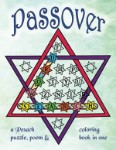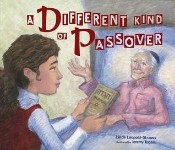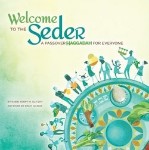Unveiling the Tapestry: A Profound Exploration of Jewish Holidays and Halacha through Rigorous Logic

Buy this book at Amazon
Thoughts on “The Tripod: A New Perspective On The Shalosh Regalim” by Rabbi Neil Lauer
The beauty of the logic and structure in Rabbi Neil Lauer’s “The Tripod” is captivating. He weaved a strong fabric of ideas by taking well-known and less familiar aspects of the three Jewish holidays known as Shalosh Regalim–Pesach, Shavuot, and Sukkot–using dozens of sources and impeccable logic. His ability to pull Torah quotes and a wide variety of rabbinical sources from the rich history of Jewish theological thinkers into a seamless composition is impressive and requires an extremely deep knowledge of these traditions. As we say at Pesach, “dayenu”: that would have been enough. But what I found awe-inspiring was the rigorous logic he used in building up his construct.
I am a non-practicing programmer, so I am familiar with the “mental crystal palace” one builds when figuring out a solution for a particularly challenging coding problem. If something interrupts this process, I sometimes lose concentration and have to build up all the intricacies of the multitudes of aspects of the structure in my mind. So, I appreciate what Rabbi Lauer has accomplished here. He created and captured a coherent, detailed, forward-thinking analysis of these holidays in writing. He built an elaborate, multilayered, intellectual construct by comparing and contrasting their aspects.
I will not analyze or attempt to describe the kind of constructs Rabbi Laeuer built. To do that, you have to read the book. Instead let me tell you my favorite kind of solution for math problems that I learned in high school. I still remember my teacher starting the explanation: imagine an n-dimensional space. Like there, in this book, the various approaches assume that you can remember the connections, patterns, and structures rabbi Laueer built in previous sections of the chapters and the books. They all build on each other. If you can follow (and it was not always easy), you will reach a “high” through the pleasure of the mind, like I did, just by the sense of accomplishment that you “got it.” I cannot even imagine what it took to come up with them.
If the above is a bit too cerebral for your tasting, let me share with you details of the book that I particularly enjoyed and do not necessarily require an interest in high-level abstractions:
- Most chapters start with a real-life parable from the author’s regular ride on the bus. The range of ideas and examples he observed is a lot of fun. He then takes them as a starting point for further ideation. His encounters with fellow bus riders and adventures in public transport truly served as inspirations. These are quite relatable stories. They prove the value of being present and open-minded at all times. One never knows where/when inspiration can strike.
- I was unfamiliar with many of the topics and sources covered in this book. Therefore, I can and do recommend it as a guidebook for the uninitiated. If you love learning, like I do, this book will feed your frenzy. The ideas and people referenced here are all available for further looking up.
- The footnotes often contain alternative ideas to those expounded in the body of the book. I appreciate that mainstream Judaism is somewhat postmodern and, in the realm of ideas, does not necessarily require one answer to be correct. Instead, it lets consensus emerge and/or allows the validity of contradicting opinions.
Even the list above is still quite abstract. But what can one do when reading such an abstract book? (Besides enjoying it, like I did.) Here are some quotes from the book I found interesting enough to keep thinking about:
- If one views the events commemorated through the Shalosh Regalim as important points in our national spiritual development, it stands to reason that they would mark junctures where the given lessons were realized, rather than when they were first taught. (Page 70)
- We tend to think of the Torah as dealing with the realities of the natural world – and it does. The Midrash teaches, however, that despite appearances, the Torah’s addressing the natural order is not a reflection of it being based on the physical reality; it is a reflection of the natural world being based on the Torah. (Page 90)
- Legal constructs placed in the halachah serve as symbols, just as physical constructs placed in the workings of the natural world serve as symbols. Agricultural/practical constructs, in some cases, serve as the symbolic representations of historical/conceptual principles (page 170)
- A pilgrimage is meant to create distance in order to aid one in noticing what he overlooked before. A person is meant to come away from the pilgrimages not only with memories or really great stories of an awe-inspiring, uncommon destination but with an appreciation of what was there the entire time. (Page 250)
- The festivals take the events that made us Jews originally and use them to make us Jews in the present. (Page 301)
If you possess the ability to recognize and value the beauty of intellect,, if your idea of having fun includes recognizing patterns, if you want to learn more about how the agricultural origin of the three Jewish holidays can deepen your own spiritual life, or if you are a knowledge architect who wants to explore new realms where the trade’s principles can be applied, you will find pleasure in and benefit from The Tripod.
Disclaimer: I have received a digital copy of this book and a small amount from the author which did not affect my review in any way.
Year first published: 2022
The book's page at the publisher's site

















